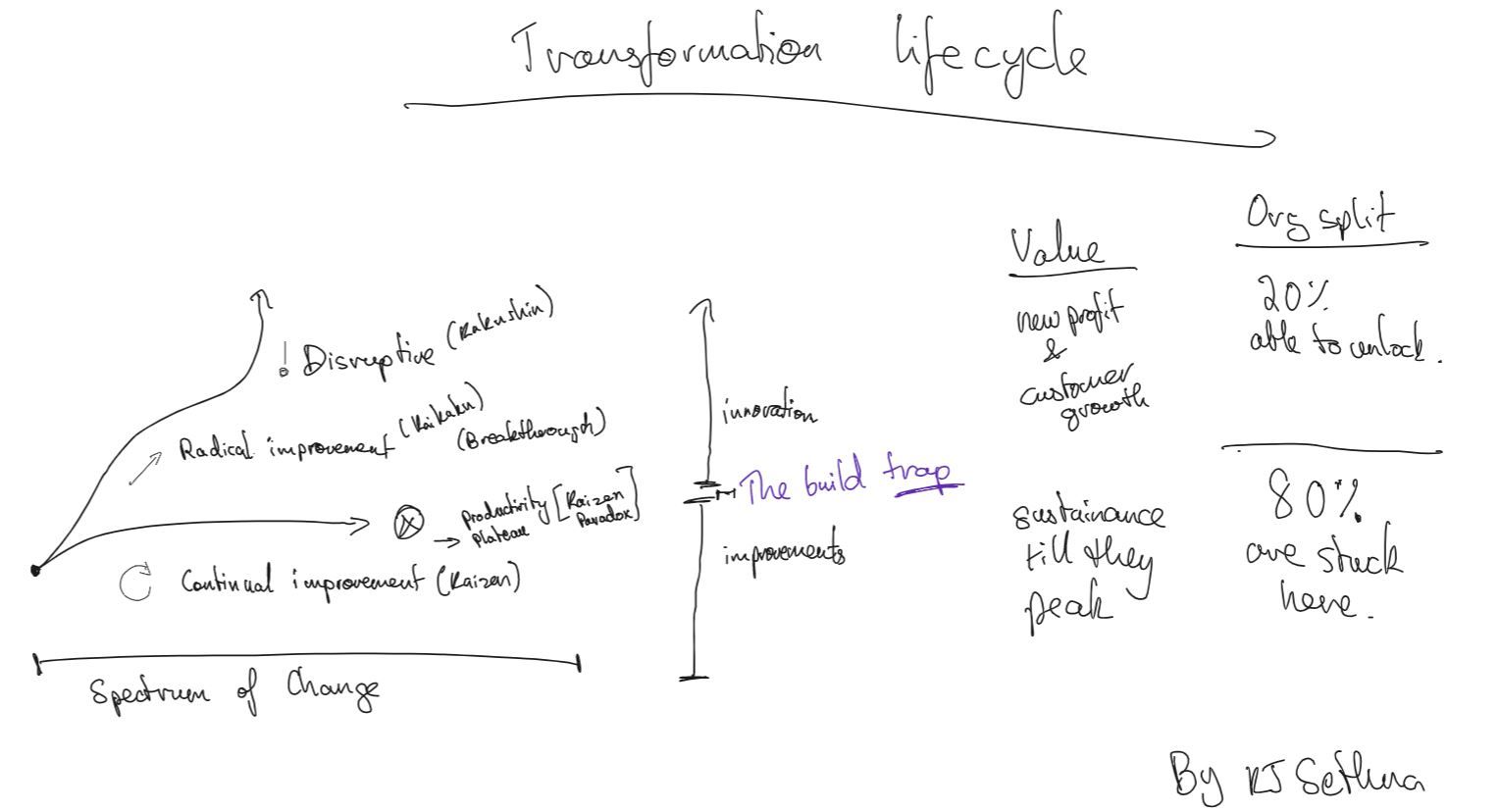In martial arts after a few years a practitioner comes across a few terms that translate over to the business, product, and tech world.
I have learned how these blend into daily life as a practitioner of various martial arts over the last 3 decades.
These are
- “Kaizen” - incremental change or often translated as continuous improvement.
- ‘Kaikaku’ - radical change or breakthrough improvement.
- ‘Kakushin’ - new change or innovative change.
- ‘Mushin’ - a free state of mind where a person is able to act without feeling and emotion.
- ‘Zanshin’ - a state of situational awareness or relaxed awareness.
For the purpose of this article, I will focus on Kaizen, Kaikaku, and Kakushin.
What is the relevance of these concepts to business?
In business, we have various interactions which involve emotional conflict, are super complex, and are disruptive.
For instance, when we look at the product development lifecycle, the most important one to be aware of is Kaizen. The Kaizen Paradox concept that comes along with this is something we often do not realize.
When an organization considers the intent to transform, it looks at continuous improvement, lean and Agile.
The Agile Industrial Complex has a strong kool-aid that results in adopting scrum or some version of it LeSS/SAFe etc.
These frameworks, while better than waterfall project management, help with speed of delivery, but they act only as lip service to customer & business centricity.
To unlock innovation, a team must break through the kaizen paradox.
Kaizen focuses on individual or team-level improvements, it ignores the system.

What is the Kaizen paradox?
In doing so, they have diluted the business need for greater investments.
This causes them to plateau at a lower level of productivity.
This kills innovation and the need for innovation.
How is it related to the build trap and feature factories?

What is the role of Kaikaku and Kakushin in all of this?
Kaikaku and Kakushin, are bought about by systematic improvement.
Kaikaku, radical improvement helps build value propositions in a product lifecycle through breakthrough improvements. This ultimately results in increasing market share.
It's the essence of unlocking stickiness to a product.
Kakushin on the other hand is focused on disrupting the market as a whole through innovation.


